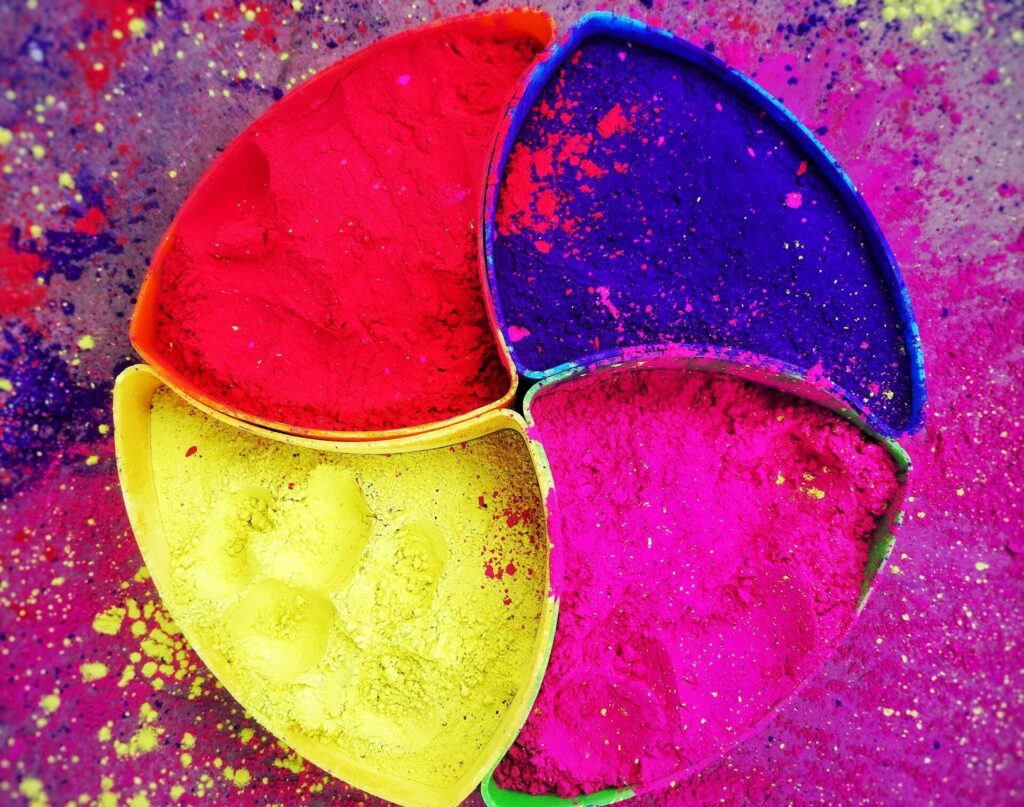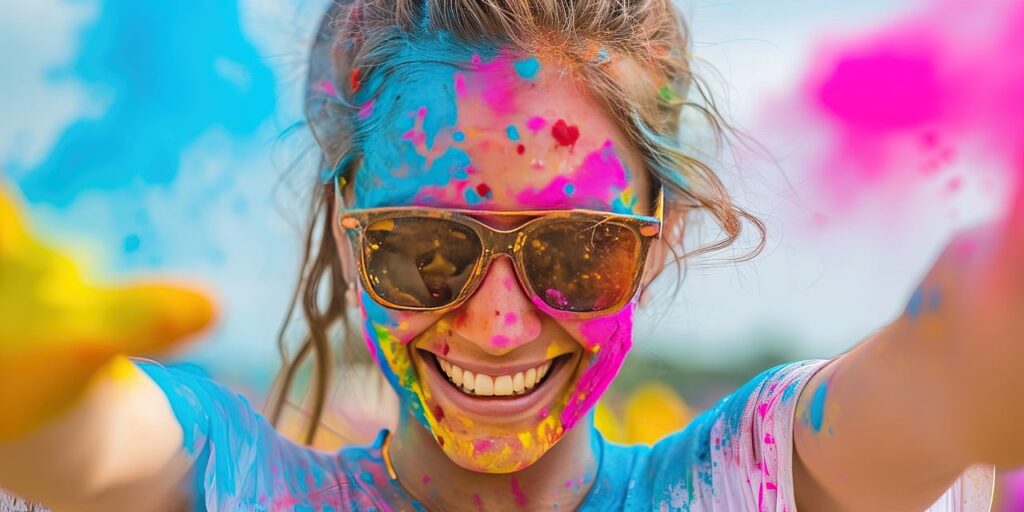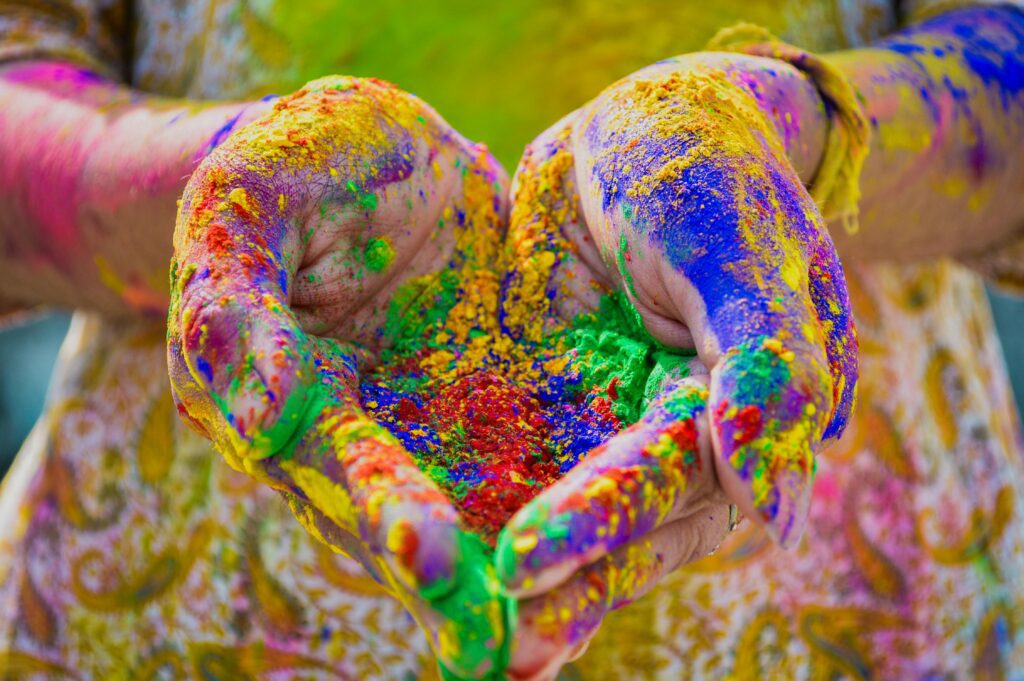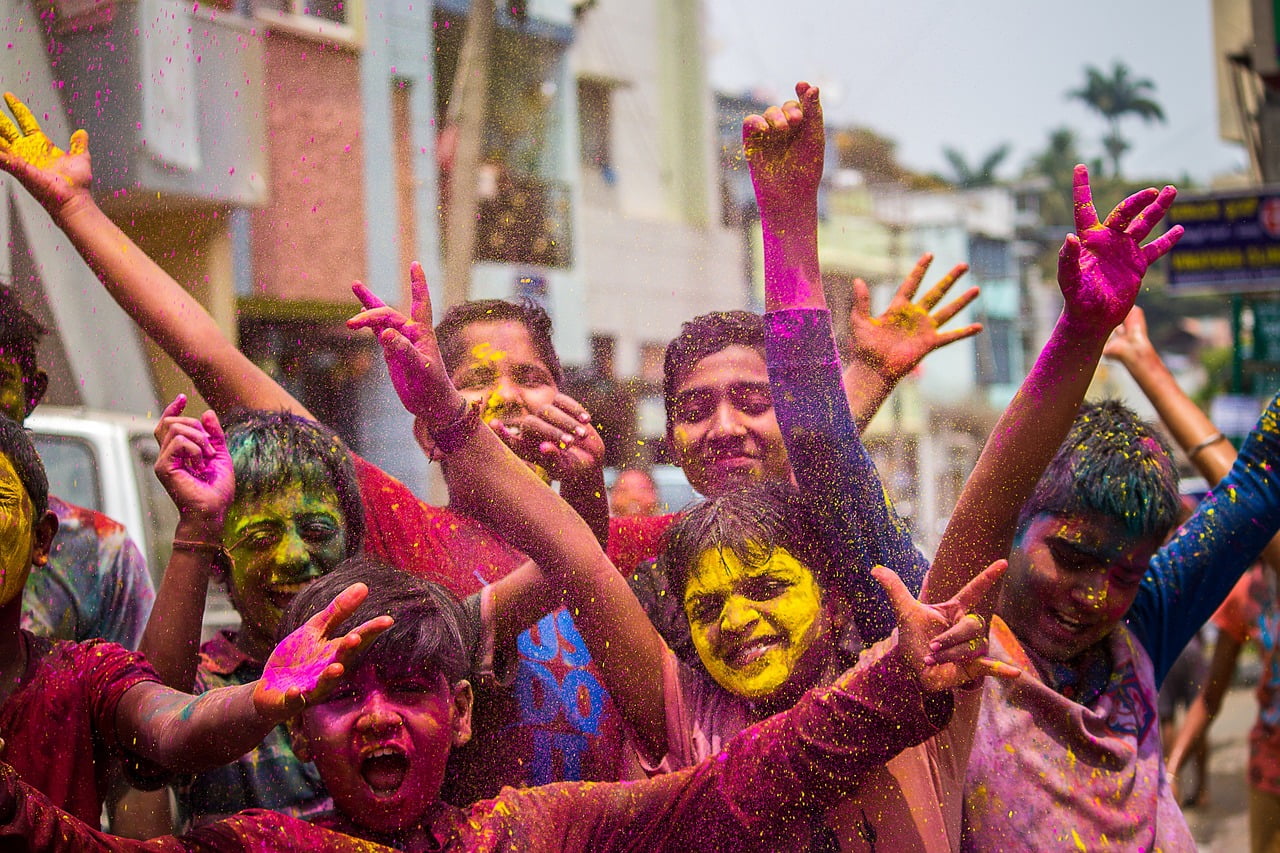Holi, also known as the festival of colours is one of India’s most colourful and beloved festival. People across the country meet and celebrate on the occasion of Holi. It is exciting to know about this festival. Different country celebrates this festival in different ways in different country. Through this article we will take you through the journey of Holi celebration in different parts of the country. And we will also put light on the significance of Holi in these areas.
Holi in Northern India: Colors, Water, and Bonfires
In the Northen part of the country in states like Haryana, Uttar Pradesh and Punjab the festival of Holi starts with Holi Dahan, this is an auspicious ritual of bonfire which represents the victory of good over evil. People gather during Holika Dahan and pray for their wishes to come true. On the following day, people make all the delicious food in their house and play with gulal and water to colour each other. Children usually celebrate this joyous festival by gleefully using water guns, balloons, and pichkaris. To signify the happiness of the occasion and the sense of togetherness, people often share sweets with their neighbours and relatives.
Lathmar Holi, a unique version of the festival, takes place in the towns of Barsana and Nandgada in Mathura and Vrindavan. These cities are especially important because they are known as the cities of Radha-Krishna. During Lathmar Holi, participants use long bamboo sticks to create playful rhythms and everyone dances to these lively beats.
Holi in Western India: Dahi Handi and Community Spirit
In the Western part of the country, Dahi Handi is celebrated during the festival of Holi. This is inspired by the innocent pranks of Lord Krishna when the makhan would be stolen from the pot and finished off. The people in these areas tie the curd pot at a certain height and make a human pyramid to break it with a coconut. The people then enjoy the ‘prasad’ of curd and start playing with colours by using gulal powder and water. Some families also use flower petals to make the Holi a safer festival.

Read our other post : Agricultural Transformation and Empowerment in Indian through JIO and other Internet provider
Holi in Southern India: Kamadhenu and Holika Puja
Holi is known as Kamadahana in places like Tamil Nadu and Karnataka. The focal point of the celebrations here is the myth of Kamadhenu, the sacred cow. To commemorate the burning of Holika, people build a bonfire and make prayers and offerings to the gods. Religious rites have been prioritized, but greetings and color-smearing are still included in the celebrations.
Kandahar is a Holi-like celebration celebrated in South India especially in Tamil Nadu and Karnataka. The main intention of celebrating Holi in this region is the story of Kamadhenu, the sacred cow as per Hindu mythology. They also indulge in the process of Holika Dahan by building a bonfire and making prayers and offerings to the gods. In the southern region, the emphasis is placed on the religious part of the festival, but the enjoyment of coloring each other with gulal and water is also enjoyed.
Holi in Eastern India: Dol Jatra and Phaguwa
In West Bengal and Odisha, people know the celebration of Holi as Dol Jatra or Dol Purnima. During this occasion, they warry images of gods in a festive parade. The joyful crowds shout slogans, sing songs, and dance. They relish the lively atmosphere playfully colouring each other. While the evenings are usually about sitting together and enjoying the folk dances and regional meals together.
Why Do We Celebrate Holi So Differently?
The main reason behind celebrating the festival of Holi differently in different festivals is because of the cultural diversity of the country. All the regions have their own stories and reasons behind celebrating the festival. But all of them mean one thing in the end, victory of good over evil. The distance in the regions means that there is a change of custom practices and traditions in these regions.
Read our other post : Benefits of Parent and Child Counseling : Build Stronger Family Bonds

What festivals similar to Holi are there in other countries?
People across Iran and Central Asia celebrate Nowruz, the Persian New Year, as a symbol of positivity and rebirth. The festival signifies the advent of spring, and they celebrate it through various rituals. These rituals exemplify themes of purification, abundance, and new beginnings, contributing to a sense of optimism and renewal for the year ahead.
2. Fagu Purnima: Nepal’s Festival of Colors
In Nepal, people recognize Holi as “Phagu Purnima” or “Festival of colors”. Just as in India, the Nepalese celebrate Fagu Purnima with great zeal. They paint each other with gulal powder and water enthusiastically, marking the welcome of spring.
3. Phagwah: Trinidad and Tobago’s enthusiastic Celebration
The Hindu community in Trinidad and Tobago celebrates Phagwah, a festival that shares many similarities with Holi. Phagwa is marked with throwing of colored powder and water, music, dance and feasting, bringing communities together in joyous celebration.
4. Tomatina: Spain’s Tomato-Throwing festival
The most unique festival celebrated in Spain. Held annually on the last Wednesday of August, it involves thousands of people playing with tomatoes. People from around the world gather to play in ripe tomatoes and turning the streets into a sea of red in a playful and joyous way.
5. Songkran Festival in Thailand
Celebrated every year for 2 days to mark the beginning of the new year, this festival is all about cleaning and purification. Much like Holi, people splash water on each other during this festival, wear colourful clothes and feast on their favourite food.
6. Ching Ming Festival
Other name of ching ming festival is tomb-sweeping festival. The ancestors’ tomb is visited by people during this time and prayers and gifts are offered to them. Celebrating together by eating traditional food and playing games follows it.
7. Carnival of Ivrea
It is also known as battle of oranges, and it is the largest food fight in Italy and surrounding cities. It is their way to mark the history of Ivrean people’s freedom from tyrannical government.

Conclusion
In the recent years, Holi has gained a lot of popularity as people have started celebrating this festival in the UK, the US and Canada as well. Communities come together eat their favourite food, dance and sing together and colour each other with gulal power and water.
Holi is not just a festival of colors; it is a celebration of togetherness and the victory of good over evil. From the crowded streets of Delhi to the small villages of South India, Holi brings people together in a spirit of joy, reducing barriers of region, language, and culture. And while its traditions may vary, the true meaning of Holi remains the same.
Read our other posts : 5 Differences Between Luxury Car Features Over Other Cars


One thought on “Celebrating Holi: Diverse Traditions Across India and Beyond”
Comments are closed.